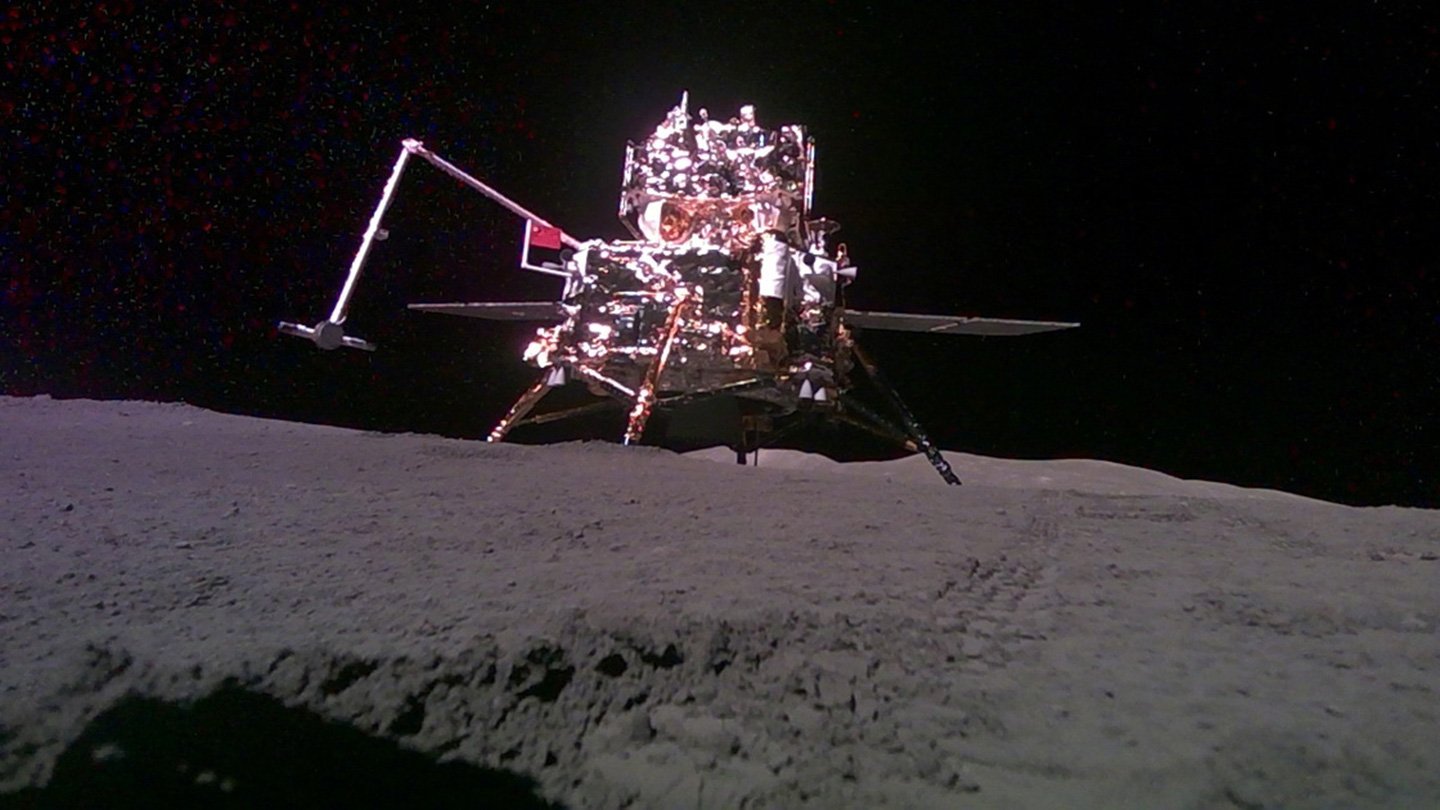A first look at rocks from the lunar farside create a volcanic mystery

The first samples from the farside of the moon contain signs of surprising volcanic activity near the lunar south pole.
Two separate analyses of lunar rocks brought to Earth by China’s Chang’e-6 spacecraft show the rocks formed from cooling magma relatively recently, about 2.8 billion years ago, according to papers published November 15 in Science and Nature. The measurements may help solve the mystery of why the moon’s farside is so different from its nearside, but also raise new questions about the history of lunar volcanism.
The moon’s two faces are like night and day, with different topography, chemical composition, crater density and evidence for volcanism. Huge solidified pools of lava called mare cover almost a third of the nearside. But only about 2 percent of the farside shows signs of flowing lava.
“The enigmatic asymmetry between the nearside and the farside of the moon … is a long-standing unresolved conundrum,” geochemist Qiu-Li Li of the Chinese Academy of Sciences in Beijing and colleagues write in Nature.
Until recently, all rocks humans had brought back from the moon were from the nearside. Samples from the Apollo and Luna missions in the 1960s and 1970s suggested the moon was most volcanically active around 4 billion years ago and had mostly cooled by about 3 billion years ago. Rocks from the Chinese Chang’e-5 mission showed more recent volcanism, around 2 billion years ago (SN: 10/7/21).
But the volcanic history of the farside was a complete mystery — until China’s Chang’e-6 mission returned the first samples ever collected from the region in June (SN: 6/5/24). The spacecraft came back to Earth with almost two kilograms of lunar soil from the South Pole-Aitken Basin, the oldest and biggest crater and the source of most of the volcanic material on the moon’s farside.
“Imagine having rock samples from maybe 10 locations in North America, and that’s what you know about Earth,” says planetary scientist Stephen Elardo of the University of Florida in Gainesville, who was not involved in the new works. “Then all of a sudden you get your first rocks from South Africa or Australia. Now you get to have that as another data point to learn about the whole planet. That’s basically what this is for the moon.”
Two groups examined the rocks using radiometric dating, a technique for estimating an object’s age from the relative amounts of certain radioactive elements it contains (SN: 10/5/21).
Geochemist Le Zhang of the Chinese Academy of Sciences in Guangzhou and colleagues studied 35 fragments of volcanic rock called basalt, and found their ages all clustered around 2.830 billion years, the researchers report in Science. Li and colleagues examined 108 fragments of basalt and found similar ages: 2.807 billion years, the team reports in Nature.
“That is younger than I would have anticipated for that region of the moon by a fair bit,” Elardo says.
That’s because of another feature both groups found in the samples. The rocks lack heat-producing elements like potassium, rare earth elements (like uranium and thorium) and phosphorous, known collectively as KREEP. On the nearside, decaying KREEP elements could keep the lunar mantle warm enough to sustain volcanism up to 2 billion years ago. But without those elements, it’s not clear how the farside stayed molten for so long, Elardo says.
The results suggest long-lasting volcanism, too. Li’s team found one rock in particular that stood out: an aluminum-rich fragment that dates back to 4.2 billion years ago. The only known lunar rock that is older is a meteorite whose origin point on the moon is unknown. Together with the younger samples, the rocks imply farside volcanism spanned at least 1.4 billion years.
Given the known differences between the moon’s hemispheres, it’s not surprising that the first farside samples look so different than the nearside ones, says Ryan Zeigler, Apollo sample curator at the Johnson Space Center in Houston. But the data are still exciting.
“I think this is just step one,” Zeigler says. “I think they’re going to bring more techniques to bear on these particles with more time. And I think that there may be more surprising things to come.”
Source link

